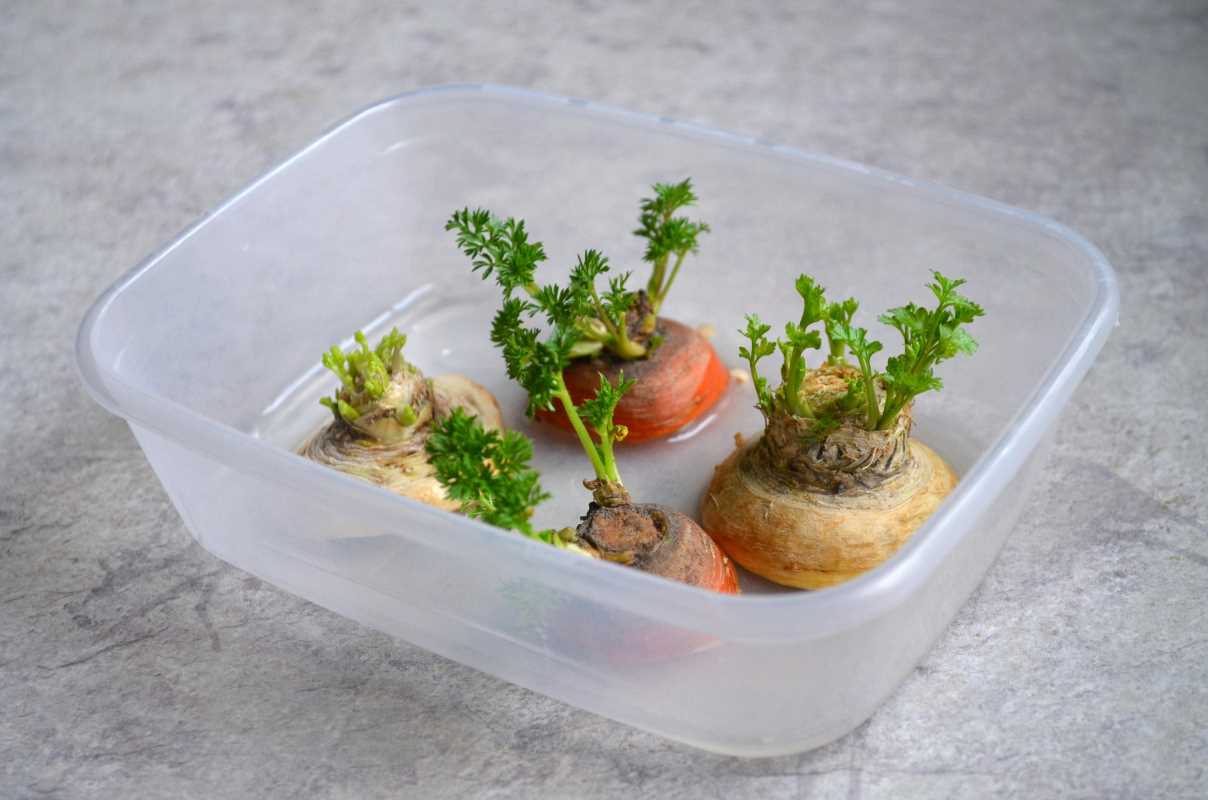Imagine transforming what you usually toss into the bin into a thriving herb garden right at home. This rewarding activity not only breathes new life into kitchen scraps but also stands as a bright beacon of sustainable living. By nurturing these bits and pieces, you cultivate a diverse array of herbs within easy reach, cutting down on waste and enhancing your daily life. Many people find this approach aligns perfectly with their eco-friendly values, offering a tangible way to make a positive mark on the environment. Plus, you get to savor the fresh, vibrant flavors of your own homegrown herbs.
Gathering Your Kitchen Scraps
Starting your herb garden begins with identifying the right kitchen scraps that can thrive in a garden setting. The beauty of this method lies in its simplicity and the minimal resources required. Here are some common kitchen scraps you can use:
- Green onions: Place the white roots in water to grow new shoots.
- Basil stems: Even if the basil has wilted, the stems can regenerate into new plants.
- Garlic cloves: Plant the cloves to produce garlic greens, perfect for culinary use.
- Lemon thyme: Pruning the stems encourages bushier growth, making more leaves available.
- Mint clippings: Mint is resilient and propagates easily from cuttings.
Utilizing these kitchen scraps allows you to minimize waste and create a sustainable cycle of growth and harvest, aligning perfectly with an eco-conscious lifestyle.
Preparing Your Planting Area
- Select a Location: Choose a spot that receives ample sunlight, ideally 6-8 hours a day. If outdoor space is limited, an indoor herb garden setup with adequate lighting can be just as effective.
- Choose Containers: Opt for recycled or repurposed containers such as old jars, pots, or even egg cartons. Ensure they have proper drainage to prevent root rot.
- Prepare the Soil: Use organic soil rich in nutrients. Create your own compost by blending vegetable scraps and allowing them to decompose, providing a natural fertilizer for your herbs.
- Organize Your Space: Arrange the containers in a way that each herb has enough space to grow without overcrowding. This setup facilitates easy maintenance and harvesting.
- Set Up a Watering System: Consider using self-watering containers or placing trays beneath your pots to manage moisture levels efficiently.
Preparing the planting area properly sets the foundation for a successful herb garden. By utilizing recycled materials and organic soil, you contribute to a more sustainable environment while creating a nurturing space for your herbs to flourish.
Planting Techniques
Once your planting area is ready, the next step is to use effective planting techniques to ensure the healthy growth of your herbs. Start by carefully placing your kitchen scraps into the prepared soil. For green onions, ensure that the roots are submerged while the tops are exposed. Trim basil stems to just above a leaf node before planting, encouraging new growth from that point.
Plant garlic cloves with the pointed end facing upwards, burying them about an inch deep in the soil. Space mint clippings adequately to allow for their natural spread, preventing them from overtaking other herbs. Regularly check the moisture levels and adjust watering accordingly to maintain an optimal environment for each type of herb.
Incorporating companion planting techniques can enhance the growth and resilience of your herb garden. For instance, planting basil alongside tomatoes improves the flavor of the tomatoes and naturally deters pests. Paying attention to the specific needs of each herb and adapting your planting methods will lead to a more robust and productive garden.
Caring for Your Growing Herbs
Maintaining a healthy herb garden requires consistent care and attention. Start by monitoring the watering schedule, ensuring that the soil remains moist but not waterlogged. Overwatering can lead to root rot, while underwatering can stunt growth. To maintain the right moisture levels, consider using a watering can with a fine spout for precision.
Sunlight is another crucial factor. Most herbs thrive in bright, indirect light, so positioning your garden in a well-lit area is essential. If natural light is insufficient, supplementing with grow lights can provide the necessary illumination for your herbs to grow strong and vibrant.
Natural pest control is also important to keep your garden healthy without relying on harmful chemicals. Introducing beneficial insects like ladybugs or using neem oil helps manage pests organically. Regularly inspect your plants for any signs of disease or infestation to take prompt action and maintain the overall health of your herb garden.
Harvesting and Enjoying Your Herbs
Harvesting your herbs at the right time ensures maximum flavor and encourages continued growth. For most herbs, the best time to harvest is in the morning after the dew has dried but before the heat of the day sets in. This timing preserves the essential oils that give herbs their distinctive flavors.
When harvesting, use clean scissors or pruning shears to snip off the desired amount. For example, with basil, regularly pinch off the top leaves to promote bushier growth and prevent the plant from becoming leggy. Harvest garlic greens once they reach a sufficient height, providing a fresh addition to your meals.
Incorporate your freshly harvested herbs into your culinary creations to fully appreciate the fruits of your sustainable gardening efforts. From garnishing dishes to creating homemade teas, the possibilities are endless, allowing you to enjoy the literal fruits of your eco-friendly lifestyle.
Transforming kitchen scraps into an herb garden reduces waste and supplies fresh herbs, enriching meals and environmental connection. Start your sustainable garden today to enjoy these benefits.
 (Image via
(Image via





